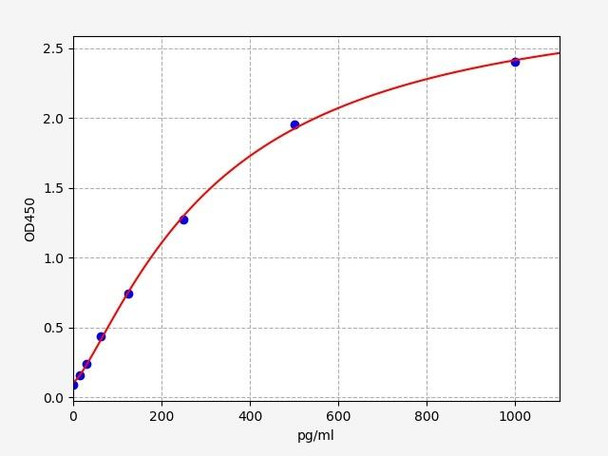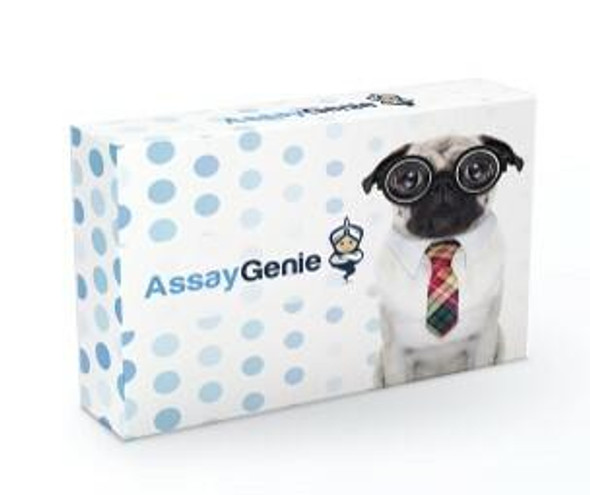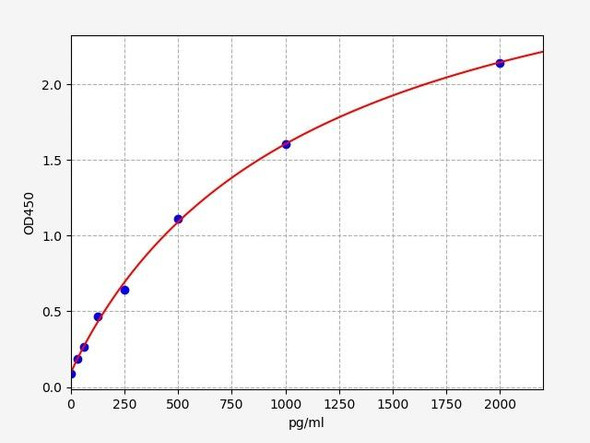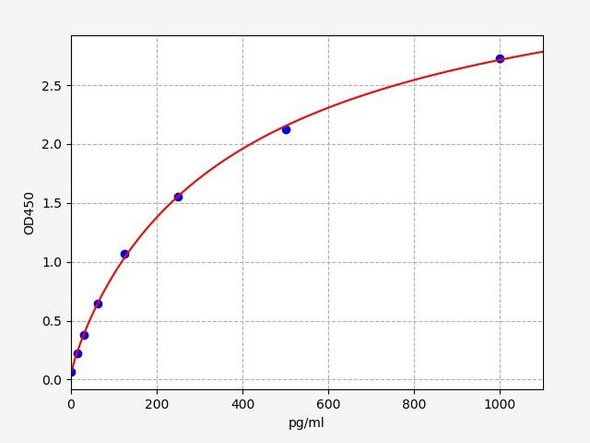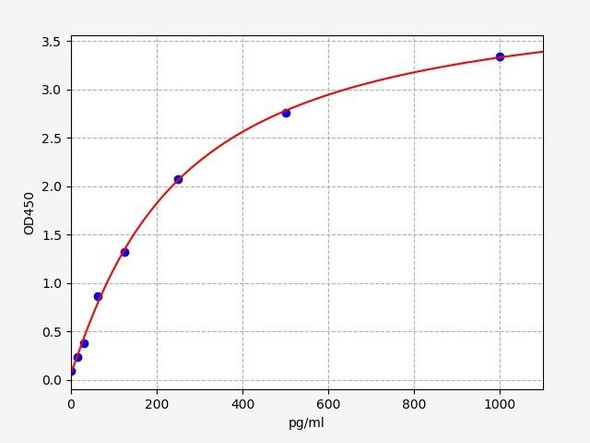Mouse IL 18 ELISA Kit
- SKU:
- MOFI00929
- Product Type:
- ELISA Kit
- Size:
- 96 Assays
- Uniprot:
- P70380
- Sensitivity:
- 9.375pg/ml
- Range:
- 15.625-1000pg/ml
- ELISA Type:
- Sandwich
- Synonyms:
- IL-18, Interleukin 18, IL18, IGIF, IL-1g, IL-1F4, Interferon-gamma-inducing factor
- Reactivity:
- Mouse
- Research Area:
- Immunology
Description
Mouse IL 18 ELISA Kit
IL-18, also known as Interleukin-18, is a cytokine that plays a crucial role in the regulation of the immune system. It is involved in modulating the immune response and has significant implications in various disease processes. The Mouse IL-18 ELISA Kit is specifically designed for the quantitative measurement of Interleukin-18 (IL-18) levels in mouse samples and enables researchers to study IL-18 levels in biological samples, contributing to a better understanding of immune system regulation and disease pathogenesis.
Key Features
| Save Time | Pre-coated 96 well plate | |
| Quick Start | Kit includes all necessary reagents | |
| Publication Ready | Reproducible and reliable results |
Overview
| Product Name: | Mouse IL 18 ELISA Kit |
| Product Code: | MOFI00929 |
| Size: | 96 Assays |
| Alias: | IL-18, Interleukin 18, IL18, IGIF, IL-1g, IL-1F4, Interferon-gamma-inducing factor |
| Detection Method: | Sandwich ELISA |
| Application: | This immunoassay kit allows for the in vitro quantitative determination of Mouse IL-18 concentrations in serum plasma and other biological fluids. |
| Sensitivity: | 9.375pg/ml |
| Range: | 15.625-1000pg/ml |
| Storage: | 4°C for 6 months |
| Note: | For Research Use Only |
Additional Information
| Recovery | Matrices listed below were spiked with certain level of Mouse IL-18 and the recovery rates were calculated by comparing the measured value to the expected amount of Mouse IL-18 in samples.
| ||||||||||||||||||||
| Linearity: | The linearity of the kit was assayed by testing samples spiked with appropriate concentration of Mouse IL-18 and their serial dilutions. The results were demonstrated by the percentage of calculated concentration to the expected.
| ||||||||||||||||||||
| CV(%) | Intra Assay <8 Inter Assay <10 |
Kit Components
| Component | Quantity | Storage |
| ELISA Microplate (Dismountable) | 8x12 strips | 4°C for 6 months |
| Lyophilized Standard | 2 | 4°C/ -20°C |
| Sample/Standard Dlution Buffer | 20ml | 4°C |
| Biotin-labeled Antibody (Concentrated) | 120ul | 4°C (Protection from light) |
| Antibody Dilution Buffer | 10ml | 4°C |
| HRP-Streptavidin Conjugate (SABC) | 120ul | 4°C (Protect from light) |
| SABC Dilution Buffer | 10ml | 4°C |
| TMB Substrate | 10ml | 4°C (Protection from light) |
| Stop Solution | 10ml | 4°C |
| Wash Buffer (25X) | 30ml | 4°C |
| Plate Sealer | 5 | - |
Other materials required:
- Microplate reader with 450 nm wavelength filter
- Multichannel Pipette, Pipette, microcentrifuge tubes and disposable pipette tips
- Incubator
- Deionized or distilled water
- Absorbent paper
- Buffer resevoir
Protocol
*Note: Protocols are specific to each batch/lot. For the exact instructions please follow the protocol included in your kit.
Before adding to wells, equilibrate the SABC working solution and TMB substrate for at least 30 min at 37°C. When diluting samples and reagents, they must be mixed completely and evenly. It is recommended to plot a standard curve for each test.
| Step | Procedure |
| 1. | Set standard, test sample and control (zero) wells on the pre-coated plate respectively, and then, record their positions. It is recommended to measure each standard and sample in duplicate. Wash plate 2 times before adding standard, sample and control (zero) wells! |
| 2. | Aliquot 0.1ml standard solutions into the standard wells. |
| 3. | Add 0.1 ml of Sample / Standard dilution buffer into the control (zero) well. |
| 4. | Add 0.1 ml of properly diluted sample ( Human serum, plasma, tissue homogenates and other biological fluids.) into test sample wells. |
| 5. | Seal the plate with a cover and incubate at 37 °C for 90 min. |
| 6. | Remove the cover and discard the plate content, clap the plate on the absorbent filter papers or other absorbent material. Do NOT let the wells completely dry at any time. Wash plate X2. |
| 7. | Add 0.1 ml of Biotin- detection antibody working solution into the above wells (standard, test sample & zero wells). Add the solution at the bottom of each well without touching the side wall. |
| 8. | Seal the plate with a cover and incubate at 37°C for 60 min. |
| 9. | Remove the cover, and wash plate 3 times with Wash buffer. Let wash buffer rest in wells for 1 min between each wash. |
| 10. | Add 0.1 ml of SABC working solution into each well, cover the plate and incubate at 37°C for 30 min. |
| 11. | Remove the cover and wash plate 5 times with Wash buffer, and each time let the wash buffer stay in the wells for 1-2 min. |
| 12. | Add 90 µl of TMB substrate into each well, cover the plate and incubate at 37°C in dark within 10-20 min. (Note: This incubation time is for reference use only, the optimal time should be determined by end user.) And the shades of blue can be seen in the first 3-4 wells (with most concentrated standard solutions), the other wells show no obvious color. |
| 13. | Add 50 µl of Stop solution into each well and mix thoroughly. The color changes into yellow immediately. |
| 14. | Read the O.D. absorbance at 450 nm in a microplate reader immediately after adding the stop solution. |
Sample Preparation
When carrying out an ELISA assay it is important to prepare your samples in order to achieve the best possible results. Below we have a list of procedures for the preparation of samples for different sample types.
| Sample Type | Protocol |
| Serum | If using serum separator tubes, allow samples to clot for 30 minutes at room temperature. Centrifuge for 10 minutes at 1,000x g. Collect the serum fraction and assay promptly or aliquot and store the samples at -80°C. Avoid multiple freeze-thaw cycles. If serum separator tubes are not being used, allow samples to clot overnight at 2-8°C. Centrifuge for 10 minutes at 1,000x g. Remove serum and assay promptly or aliquot and store the samples at -80°C. Avoid multiple freeze-thaw cycles. |
| Plasma | Collect plasma using EDTA or heparin as an anticoagulant. Centrifuge samples at 4°C for 15 mins at 1000 × g within 30 mins of collection. Collect the plasma fraction and assay promptly or aliquot and store the samples at -80°C. Avoid multiple freeze-thaw cycles. Note: Over haemolysed samples are not suitable for use with this kit. |
| Urine & Cerebrospinal Fluid | Collect the urine (mid-stream) in a sterile container, centrifuge for 20 mins at 2000-3000 rpm. Remove supernatant and assay immediately. If any precipitation is detected, repeat the centrifugation step. A similar protocol can be used for cerebrospinal fluid. |
| Cell culture supernatant | Collect the cell culture media by pipette, followed by centrifugation at 4°C for 20 mins at 1500 rpm. Collect the clear supernatant and assay immediately. |
| Cell lysates | Solubilize cells in lysis buffer and allow to sit on ice for 30 minutes. Centrifuge tubes at 14,000 x g for 5 minutes to remove insoluble material. Aliquot the supernatant into a new tube and discard the remaining whole cell extract. Quantify total protein concentration using a total protein assay. Assay immediately or aliquot and store at ≤ -20 °C. |
| Tissue homogenates | The preparation of tissue homogenates will vary depending upon tissue type. Rinse tissue with 1X PBS to remove excess blood & homogenize in 20ml of 1X PBS (including protease inhibitors) and store overnight at ≤ -20°C. Two freeze-thaw cycles are required to break the cell membranes. To further disrupt the cell membranes you can sonicate the samples. Centrifuge homogenates for 5 mins at 5000xg. Remove the supernatant and assay immediately or aliquot and store at -20°C or -80°C. |
| Tissue lysates | Rinse tissue with PBS, cut into 1-2 mm pieces, and homogenize with a tissue homogenizer in PBS. Add an equal volume of RIPA buffer containing protease inhibitors and lyse tissues at room temperature for 30 minutes with gentle agitation. Centrifuge to remove debris. Quantify total protein concentration using a total protein assay. Assay immediately or aliquot and store at ≤ -20 °C |
| Breast Milk | Collect milk samples and centrifuge at 10,000 x g for 60 min at 4°C. Aliquot the supernatant and assay. For long term use, store samples at -80°C. Minimize freeze/thaw cycles. |
IL 18 Background
Interleukin 18 (IL 18)
IL-18, also known as Interleukin-18, is a cytokine that plays a crucial role in the regulation of the immune system. It is involved in modulating the immune response and has significant implications in various disease processes. IL-18 exerts its effects by promoting the production of pro-inflammatory cytokines and activating immune cells such as T cells, NK cells, and macrophages. Understanding the gene and protein structure of IL-18 in mice provides valuable insights into its function and clinical significance.
IL 18 Gene
In mice, IL-18 is encoded by the Il18 gene, which is located on chromosome 9. The IL18 gene consists of 11 exons and 10 introns and is highly conserved across different species. It serves as the blueprint for the production of IL-18 protein. The gene is regulated by various transcription factors and can be induced in response to diverse stimuli, including infections and inflammatory signals such as the activation of NF‐κB pathway, and the binding of TLR to PAMPs . Studying the Il18 gene enables a better understanding of the mechanisms involved in IL-18 production and regulation, providing a foundation for investigating its role in immune responses and diseases. IL 18 is constitutively expressed in many cell types such as monocytes, osteoblasts, macrophages, dendritic
IL 18 Processing
The mature IL-18 protein consists of 192 amino acids in mice and belongs to the IL-1 superfamily of cytokines. However, IL-18 is produced as an inactive precursor, and lacks the signal peptide required for its release. It accumulates in the cytoplasm. where it is processed by caspase 1 and NLRP3 inflammasome.
Predicted Structure of Mouse IL 18. Source: Uniprot
IL 18 Receptor
The mechanism of action of IL-18 involves binding to its receptor, IL-18R, which is expressed on various immune cells. This binding initiates a signaling cascade that leads to the activation of downstream signaling molecules, including kinases and transcription factors. These signaling events ultimately result in the production of pro-inflammatory cytokines, such as IFN-γ, tumor necrosis factor-alpha (TNF-α), and interleukin-6 (IL-6), which contribute to immune activation and inflammation.
IL 18 Binding Protein
IL-18 binding protein (IL-18BP) is a crucial regulator of IL-18 activity in the immune system. It serves as a natural antagonist by binding to IL-18 and preventing its interaction with its receptor, IL-18R. IL-18BP is a soluble protein that circulates in the bloodstream and acts as a potent inhibitor of IL-18-mediated inflammation.
The primary function of IL-18BP is to maintain a balance between pro-inflammatory and anti-inflammatory responses mediated by IL-18. IL-18BP accomplishes this by sequestering IL-18, preventing its binding to IL-18R, and inhibiting downstream signaling events. This action effectively limits the pro-inflammatory effects of IL-18.
IL 18 Clinical Significance
The clinical significance of IL-18 lies in its involvement in various disease processes. Dysregulation of IL-18 signaling has been implicated in several inflammatory and autoimmune disorders, including rheumatoid arthritis, inflammatory bowel disease, and psoriasis. Elevated levels of IL-18 have also been observed in certain infectious diseases, such as sepsis and viral infections. Additionally, IL-18 has been investigated as a potential therapeutic target for cancer immunotherapy due to its ability to enhance anti-tumor immune responses.
Mouse IL 18 ELISA Kit FAQs
Q: What is the purpose of the Mouse IL-18 ELISA Kit?
The Mouse IL-18 ELISA Kit is specifically designed for the quantitative measurement of Interleukin-18 (IL-18) levels in mouse samples. It provides a reliable and accurate method to assess the concentration of IL-18, an important cytokine involved in immune responses, inflammation, and various disease processes. This kit enables researchers to study IL-18 levels in biological samples, contributing to a better understanding of immune system regulation and disease pathogenesis.
Q: What type of samples can be used with the Mouse IL-18 ELISA kit?
The Mouse IL-18 ELISA Kit is compatible with a wide range of sample types, including serum, plasma, cell culture supernatants, and tissue homogenates. It offers flexibility in sample selection, allowing researchers to analyze IL-18 levels in various biological matrices derived from mouse samples.
Q: Can the Mouse IL-18 ELISA Kit be used with other species?
The Mouse IL-18 ELISA Kit is specifically designed for the measurement of IL-18 levels in mouse samples. However, it may cross-react with IL-18 from other closely related species. If you are working with samples from a different species, we recommend consulting the product manual or contacting our technical support team to determine the kit's suitability and any potential cross-reactivity.
Q: Where can I find additional technical support or assistance with the Mouse IL-18 ELISA kit?
For any technical inquiries or assistance regarding the Mouse IL-18 ELISA kit, you can reach out to our team. They will be available to answer your questions and provide the necessary guidance to ensure a successful experiment.
Related Products
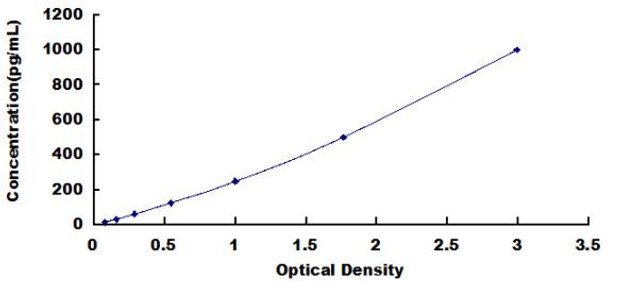
| Mouse Interleukin 1 Beta (IL-1b) ELISA Kit | |
|---|---|
| ELISA TYPE: | Sandwich |
| SENSITIVITY: | 6.2pg/mL |
| RANGE: | 15.625-1000pg/mL |
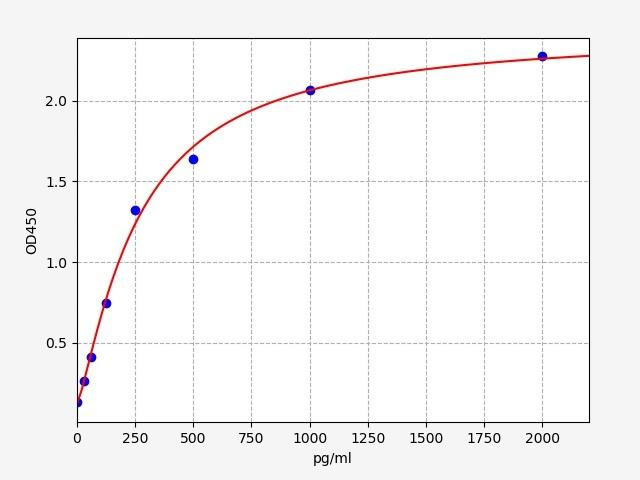
| Mouse TNF alpha ELISA Kit | |
|---|---|
| ELISA TYPE: | Sandwich ELISA, Double Antibody |
| SENSITIVITY: | 18.75pg/ml |
| RANGE: | 31.25-2000pg/ml |
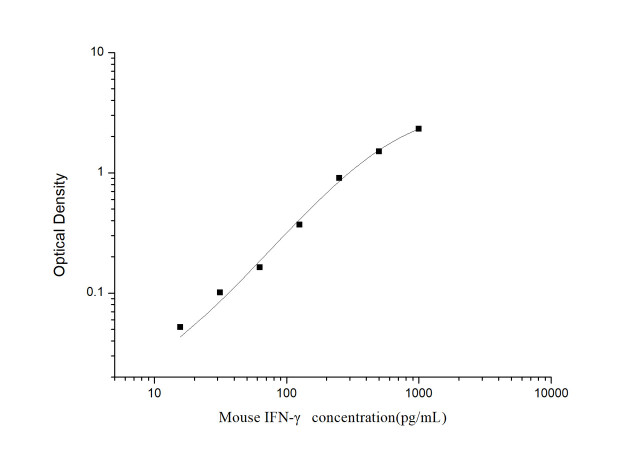
| Mouse IFN-gamma (Interferon Gamma) ELISA Kit | |
|---|---|
| ELISA TYPE: | Sandwich |
| SENSITIVITY: | 9.38pg/mL |
| RANGE: | 15.63-1000pg/mL |

